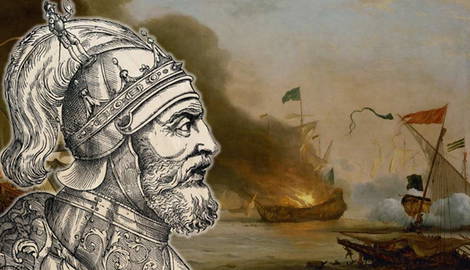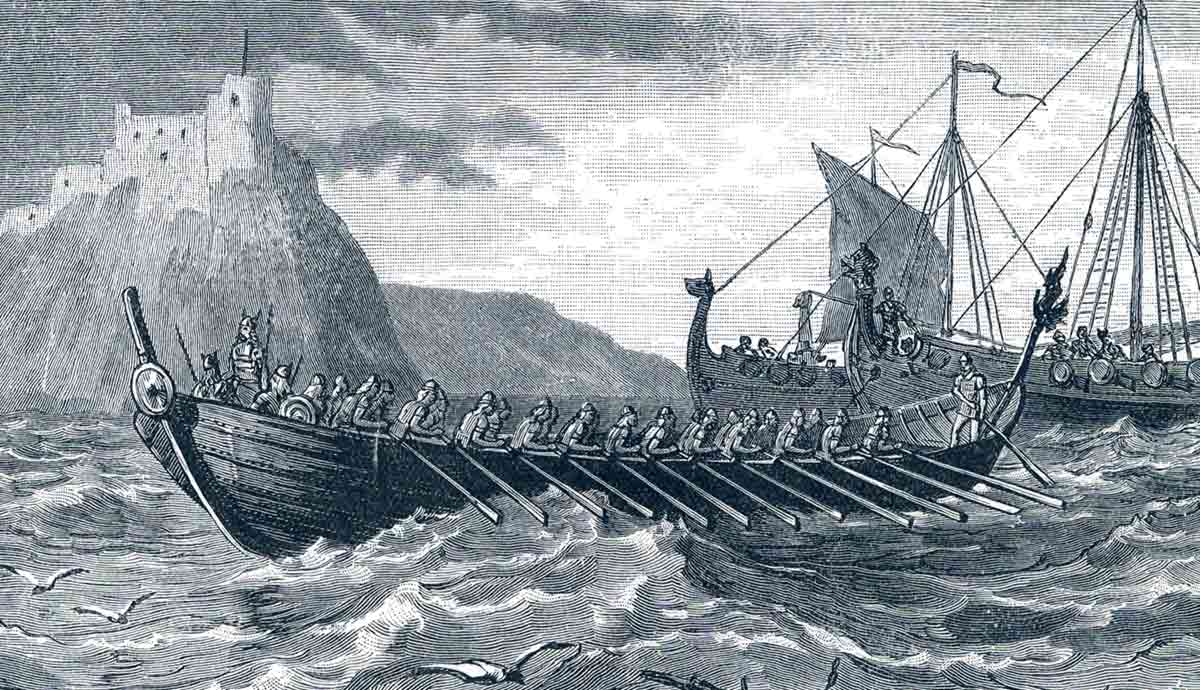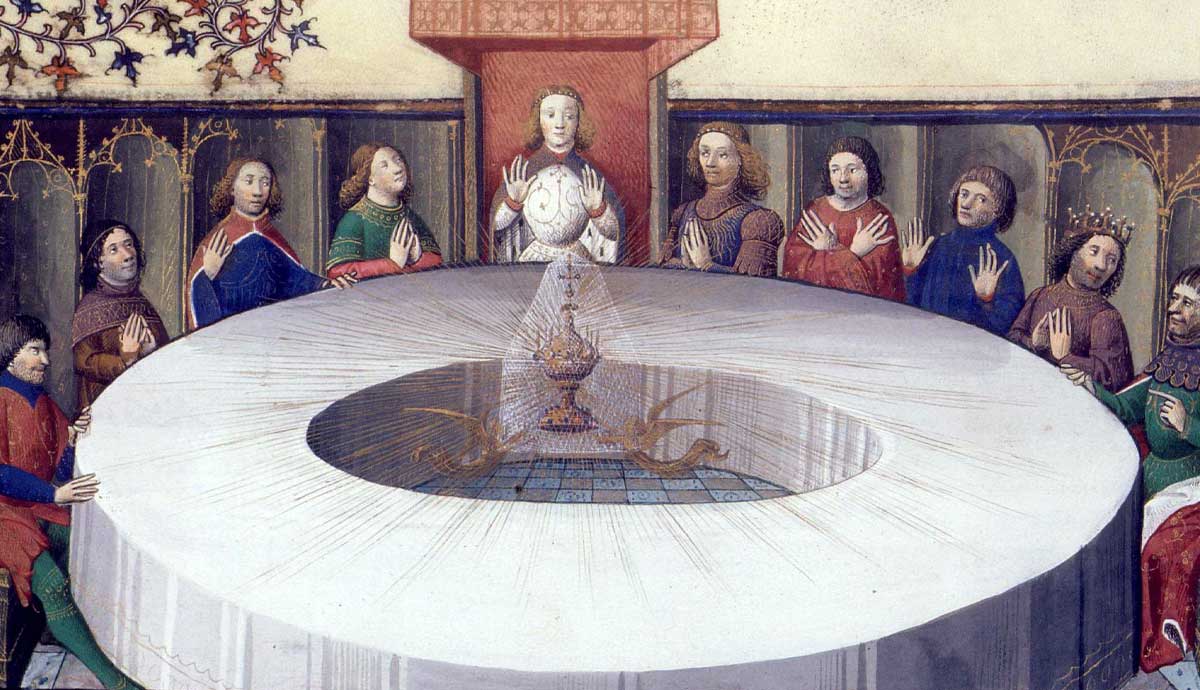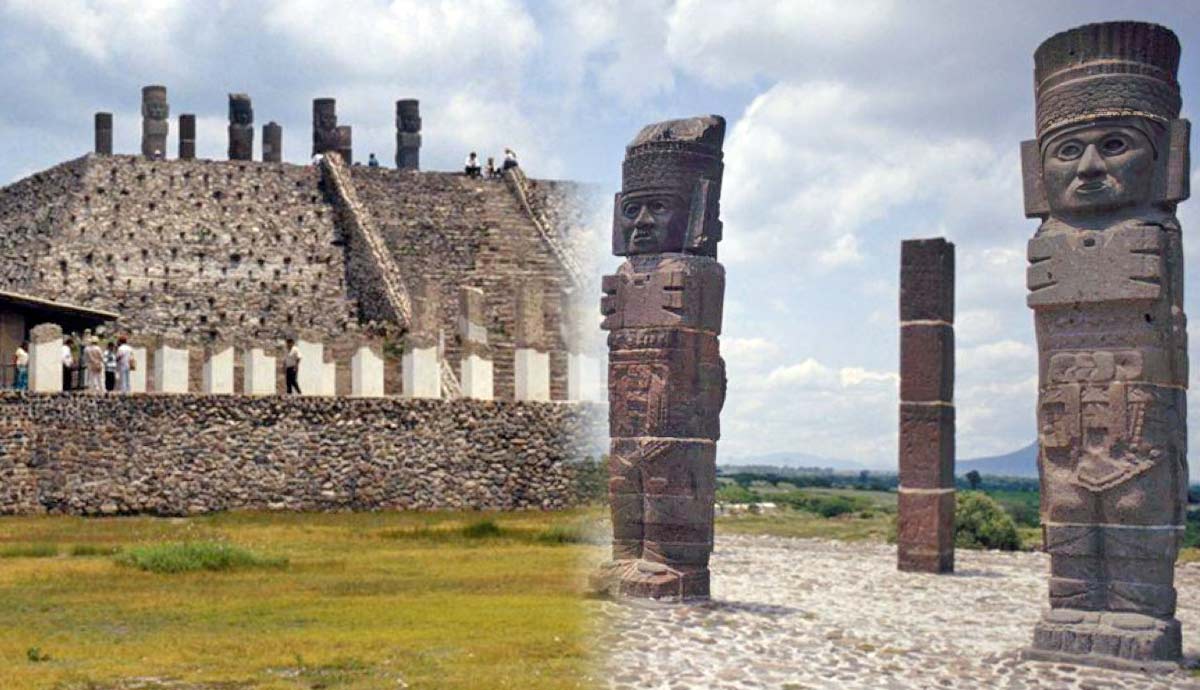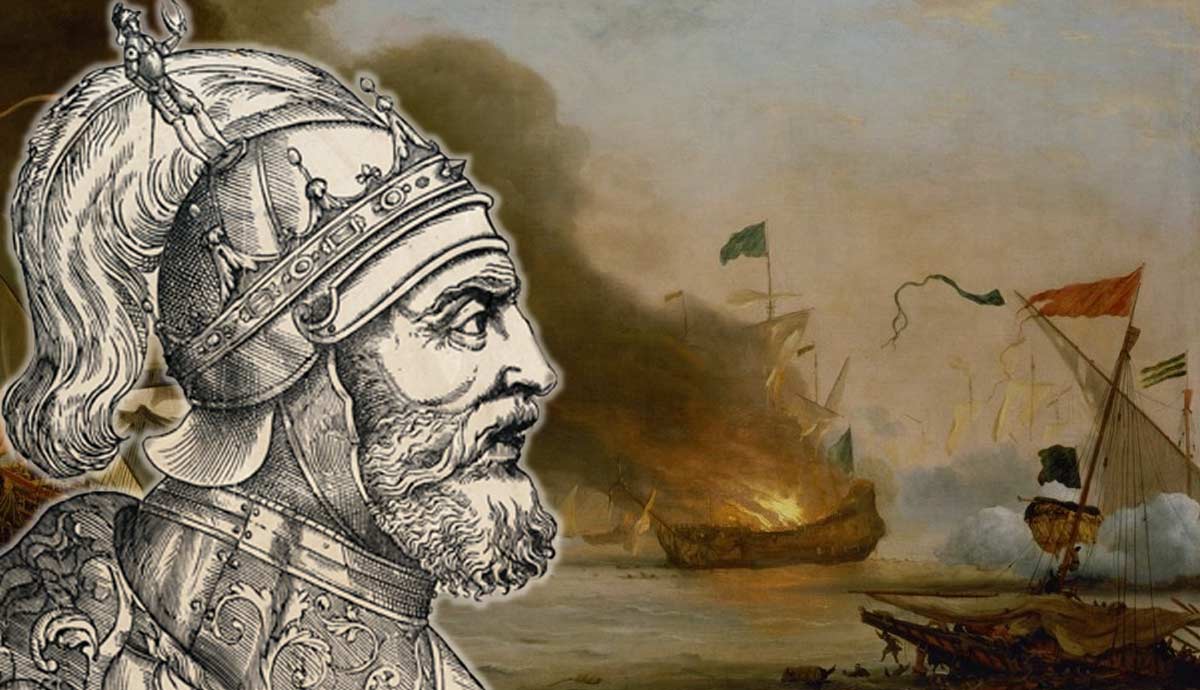
Upon the mention of pirates, most people envision the swashbuckling brigands who terrorized the seas of the Caribbean. However, the calmer waters of the Mediterranean would also suffer the scourge of piracy. Between the 16th and 19th centuries, pirates from the Barbary States of North Africa plundered ships throughout the region, much to the frustration of the European empires. The Barbary Pirates became infamous for their role in the slave trade, capturing sailors from defeated ships or stealing away innocents from small coastal villages, all to be sold into slavery in the Ottoman Empire.
The Barbary States

The Maghreb region of Africa, today recognized as Morocco, Algeria, Tunisia, and Libya, was once known as the Barbary States. The Europeans gave this name to the Berber people, known natively as the Amazigh, who inhabit the area.
The Barbary States were never a unified political entity but rather were a congregation of various military republics under the control of petty rulers. Much of the region’s power was centered in the major cities of Algiers, Tunis, and Tripoli. During the 16th century, the Barbary States, except for Morocco, signed an agreement with the expanding Ottoman Empire, in which the Barbary States fell under Ottoman sovereignty. However, the states still maintained much of their autonomy.
The Barbary States lacked economic prosperity, failing to prosper as traders as many other states along the Mediterranean coastline. This led the states to seek fortune through other means, namely, through piracy.
Piracy in the Barbary States

The Ottomans gave authorization to the Barbary States to engage in piracy against Christian European shipping, thus weakening the Ottoman’s rivals. Piracy quickly became of huge economic importance to the region. Across the states, thousands of sailors were employed on immense fleets. The pirate fleet of Algiers, the largest across the Barbary States, consisted of over 100 ships crewed by as many as 10,000 men. It is estimated that 25% of Algiers’s workforce was employed in piracy. These sailors were not only native Berbers and Arabs but also heralded from Turkey, Syria, Greece, and Italy. Barbary Pirates also included English and Dutch sailors who mutinied from their respective nations and converted to Islam.

Barbary pirates quickly extended their zone of operations, raiding ships throughout the Mediterranean, the Atlantic coast of West Africa, and even as far north as Iceland. European ships fell victim to the pirate’s sudden and vicious attacks. Between 1609 and 1625, a reported 466 British vessels were captured. Facing increasing disruption to their vital trade, wealthy European sea-faring nations such as Great Britain, France, and Sweden resorted to signing agreements and paying tribute to the Barbary Pirates in return for safe passage for their ships.
While the Barbary States became obscenely wealthy from the cargo they had plundered, the real fortune was found through enslaving those upon the ships they had captured.
The Barbary Slave Trade

Piracy and slavery had been common practices in the North African region for some time. Notably, the North African coast was famed for its slave markets during its time under occupation by the Roman Empire.
Across the three centuries of Barbary pirate activity, between 1500 and 1800, it is roughly estimated that 1,250,000 Europeans were captured and enslaved. Predominantly, most of these slaves were sailors captured after their ships had been attacked. However, the Barbary Pirates increasingly raided coastlines across Europe, attacking small islands, towns, and fishing villages and abducting their population.
Notable instances of this include the 1551 attack on the Maltese island of Gozo, where pirates accompanying the Ottoman fleet captured 6,000 people, almost the island’s entire population. In 1543, pirates under the command of the famed Hayreddin Barbarossa enslaved 4,000 people from the Italian island of Ischia. Finally, in 1558, the Balearic Islands of Spain were attacked, and another 4,000 people were captured.
The Sack of Baltimore

One of the most famous examples of a Barbary raid occurred during the summer of 1631. During June, two Barbary ships under the command of Reis Mourad the Younger, a Dutchman who had converted to Islam, were prowling the coast of Ireland. On June 17, the pirates attacked and scuttled an English ship before capturing two Irish fishing boats two days later.
With the Irish fishing boats added to his flotilla, Reis turned his attention to the small coastal village of Baltimore on Ireland’s south coast. During the early morning hours on June 20, 1631, Reis and 230 of his men slipped ashore under the cover of darkness. The pirates spread out across the village before launching a simultaneous attack. As the villagers slept, the pirates smashed down their doors and dragged them from their beds. An estimated 20 men, 33 women, and 54 children were captured.
Little is known of the fate of the Baltimore captives. After arriving in Algiers, they were certainly sold into slavery, where they would face a life of cruelty and horror. It is believed that two of the Baltimore captives were successfully ransomed. Joan Broadbroke and Ellen Hawkins, after 15 years of captivity, were freed and returned to England.
Life Under Barbary Slavery

As expected, those unfortunate enough to find themselves enslaved by the Barbary Pirates endured a brutal and horrific existence.
Those captured can be placed into two broad categories: public slaves and private slaves. Public slaves belonged to the ruling Pasha, who claimed one-eighth of all enslaved people and reduced prices on all the others. These slaves were kept in large prisons known as Baños in squalid, overcrowded conditions with little food and water. Mainly, these slaves were used to row the ships of the pirates, during which thousands died at sea. Others worked on state projects, quarrying stone, felling timber, building infrastructure, and constructing new ships. Women who were captured were either forced into the Pasha’s harem or served him as attendants.

Private slaves, as the name suggests, were usually owned privately by wealthy individuals. Usually, they were used for agricultural labor and construction work. Though rare, privately owned slaves were more likely to be well cared for by their owners than public slaves.
Some slaves were fortunate enough to be ransomed and thus saved from their lives of dreadful servitude. In 1640, the English Parliament established the Committee of Algiers to oversee the ransoming of British captives. Five years later, following a pirate raid on the south coast, which resulted in 240 people being captured, Parliament dispatched Edmund Cason to Algiers. Cason successfully ransomed 250 English captives and spent much of the remainder of his life attempting to free more.
The Barbarossa Brothers

Two of the most infamous Barbary pirates were the Barbarossa brothers, Aruj and Hayreddin. The brothers were born on the Greek island of Lesbos. Their father was a Christian renegade who joined the Ottoman army. Both brothers became seamen and settled on the island of Djerba, located off the Tunisian coast, which was a well-known recluse for piracy.
Together, they became successful pirates, commanding over a dozen ships and pillaging ships belonging to the Spanish. Aruj, however, had greater ambitions than being a mere pirate. In 1516, the brothers attacked and successfully captured Algiers, and Aruj declared himself the new Sultan. Aruj rapidly expanded his territory by capturing the key cities of Ténès and Tlemcen. However, in 1518, the Spanish, who were becoming increasingly concerned with Aruj’s growing strength, attacked Tlemcen. Aruj attempted to flee; however, he was killed and swiftly beheaded.

Upon Aruj’s death, Hayreddin assumed control of Algiers. Facing further threats from the Spanish, Hayreddin made an agreement with Suleiman I of the Ottoman Empire. In return for 2,000 Ottoman troops to support Hayreddin, Algiers would fall under Ottoman control. Years later, Charles V of Spain attacked numerous ports in Ottoman Greece. In response, Suleiman I summoned Hayreddin to Constantinople and named him Admiral in Chief of the Ottoman fleet.
Now commanding a fleet of over 100 ships, Hayreddin attacked ports across the Mediterranean and famously captured Tunis in 1534. After his many years at sea, Hayreddin retired to Constantinople in 1545 and died the following year.
The Barbary Wars

Prior to American independence in 1776, American shipping received protection from the Barbary pirates due to Britain’s treaty with the North African states. However, upon independence, the British notified the pirates that the US ships were now free for them to attack.
Subsequently, American ships came under increasing attacks from the Barbary pirates. In response to the piracy, Congress authorized the construction of the first ships of the US Navy. In 1795, the US dispatched diplomats to the Barbary States to negotiate treaties, agreeing to pay tribute to the pirates in return for safe passage for American ships.

However, in 1801, the Pasha of Tripolitania declared that the US was late on its tributary payment and, thus, declared war. Tripolitania had also declared war on Sweden the previous year for the same reason. Following a successful naval and land assault, the US defeated the forces of Tripolitania. A peace treaty was officially signed in 1805, ending the First Barbary War.
In 1812, the ruler of Algiers announced that the tribute money the US had agreed to pay as part of the 1795 treaty was insufficient and declared war. However, this coincided with the outbreak of the War of 1812 between the US and Britain. It was not until 1815 that President James Madison requested Congress to declare war on Algiers. By this time, a new ruler held power in Algiers, known as Dey Omar Agha. Following a successful naval battle off of the Algerian coast, Agha reluctantly accepted the US peace treaty. Following victory in the Second Barbary War, the US also signed new treaties with Tunis and Tripoli.
The Bombardment of Algiers

Despite his significant defeat during the Second Barbary War, Dey Omar Agha of Algiers sought to continue his piracy campaign. Britain had previously sought peaceful relations with the Barbary States, even requisitioning its piratic talents against the United States and the French during the Napoleonic Wars. However, with the aforementioned war finished, Britain applied greater pressure upon the Barbary States to end their slavery.
In 1816, Britain dispatched a diplomatic mission to North Africa. The leaders of Tunis and Tripoli agreed to Britain’s terms. However, Dey Omar Agha was reluctant, though seemingly agreed to Britain’s demands. Not long after the diplomats departed, approximately 200 Sicilian, Sardinian, and Corsican fishermen who were under British protection were massacred.

The massacre caused public outrage, and Britain immediately dispatched a squadron of Royal Navy ships under the command of Lord Exmouth. While stopping in Gibraltar on their way to Algiers, the British ships were accompanied by five Dutch ships that offered to join the British mission.
During the afternoon of August 17, 1816, the Anglo-Dutch squadron bombarded the port of Algiers. Algerian ships attempted to engage, and a significant naval battle ensued. By the late evening, Lord Exmouth ordered the squadron to move out of range of Algiers and weigh anchor. During the exchange, the Anglo-Dutch squadron had fired approximately 50,000 round shots and 960 explosive mortar shells. However, they had sustained significant damage, losing approximately 900 men. However, almost the entirety of the Algerian fleet had been destroyed. Lord Exmouth sent terms to Dey Omar Agha, who accepted and guaranteed the release of thousands of enslaved Christians.
Decline

Defeat at both the Barbary Wars and the Bombardment of Algiers significantly weakened the Barbary States, as well as their appetite for piracy. Though Barbary slavery continued at a much-reduced level, it was of declining concern to the world’s great powers.
The final nail in the pirate’s coffin was in 1830, when France began its conquest of Algeria. At the time, France was amid political turmoil. The Bourbon Restoration, which saw the monarchy under the House of Bourbon restored in 1815 under King Louis XVII, was becoming increasingly unpopular among the French populace. Charles X, who succeeded Louis XVII in 1824, believed a colonial expedition might improve his favor.
In 1827, the French consul to Algeria, Pierre Deval, met with Hussein Dey of Algiers to settle a dispute between Algiers and some French merchants. However, tensions quickly rose at the meeting. Hussein Dey struck Deval with his fly-whisk, a small fan used to swat flies. Charles X used this altercation as justification to impose a naval blockade on Algiers. The blockade lasted for three years.

The Algerians refused to negotiate, so Charles X decided to take Algiers by force. French forces arrived in Algeria on June 14, 1830. After numerous victories, including the Battle of Staouéli, France captured Algiers three weeks later.
The French capture of Algiers and its subsequent expansion over further Algerian and North African territory conclusively ended both the Barbary States and its piracy. For over two centuries, the Barbary Pirates, from their strongholds in North Africa, terrorized the Mediterranean and caused major disruption to global trade. With unrelenting malice, the Barbary Pirates enslaved thousands and subjected them to a harsh life of depravity. Only successive attacks from the United States, Great Britain, and finally, France would finally end the Barbary scourge upon the Mediterranean Seas.
